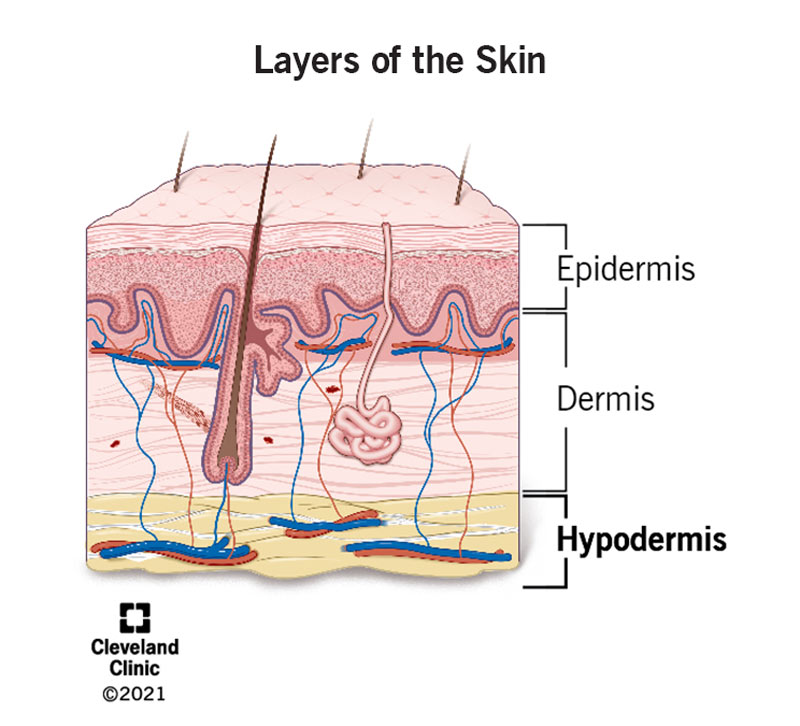Your hypodermis is the bottom layer of skin in your body. It has many functions, including insulating your body, protecting your body from harm, storing energy and connecting your skin to your muscles and bones.
Advertisement
Cleveland Clinic is a non-profit academic medical center. Advertising on our site helps support our mission. We do not endorse non-Cleveland Clinic products or services. Policy

Your skin has three main layers:
Advertisement
Cleveland Clinic is a non-profit academic medical center. Advertising on our site helps support our mission. We do not endorse non-Cleveland Clinic products or services. Policy
The hypodermis has many functions, including:
The hypodermis layer includes:
Advertisement
Together with your other layers of skin, the hypodermis protects your skeletal system, organs, muscles and tissues from harm.
Hypodermis thickness differs across your body. Fatty tissue amasses in different parts of your body according to hormones and genetics.
If you have a higher amount of testosterone in your body, your hypodermis is thickest in your abdomen, arms, lower back and shoulders.
If you have a higher amount of estrogen in your body, your hypodermis is thickest in your butt, hips and thighs.
The hypodermis is the bottom layer of your skin, located below the epidermis (top layer) and dermis (middle layer) in your skin.
The hypodermis is yellowish. Depending on how much of the pigment called carotene is in your hypodermis, it can be dark yellow or light yellow.
The hypodermis varies in thickness across your body. It’s thinnest over your eyelids and external genitals, where it may be less than 1 millimeter thick. It’s thickest in your abdomen and butt, where it may be over 3 centimeters thick.
Connective tissue and adipose tissue mostly make up the hypodermis.
Some conditions and disorders that affect the hypodermis include:
Additionally, as you age, the hypodermis starts to thin. As a result, less connective tissue joins your dermis to your muscles, tissue and bones, and your skin starts to sag.
Some common signs or symptoms of conditions that can affect your hypodermis include:
Your healthcare provider will conduct a physical exam to check for any possible symptoms or conditions. They may also perform the following tests:
If you have melanoma, you may need further imaging tests to determine if it has spread.
Some common treatments for conditions that affect your hypodermis include:
Advertisement
The following lifestyle tips help keep your hypodermis healthy and safe:
The hypodermis is the bottom layer of skin in your body. It has many important functions, including storing energy, connecting the dermis layer of your skin to your muscles and bones, insulating your body and protecting your body from harm. As you age, your hypodermis decreases in size, and your skin starts to sag. Dermal fillers help restore volume to your skin as your hypodermis decreases.
Advertisement
Cleveland Clinic’s primary care providers offer lifelong medical care. From sinus infections and high blood pressure to preventive screening, we’re here for you.

Last reviewed on 10/19/2021.
Learn more about the Health Library and our editorial process.